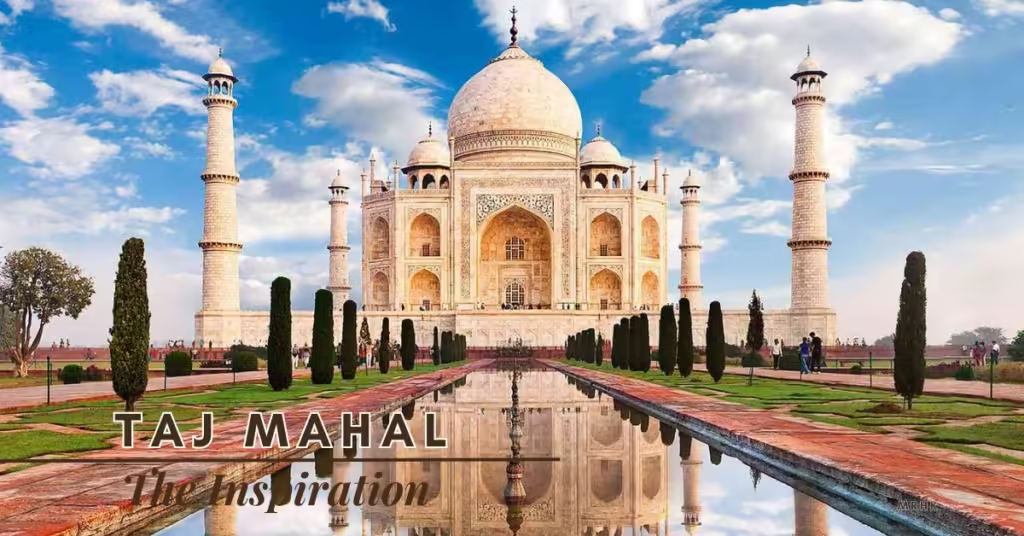The Taj Mahal is not just a monument; it’s a masterpiece that has stood the test of time as a symbol of love, art, and cultural heritage. Located in Agra, India, this iconic structure attracts millions of visitors from across the globe. But what makes it so special? Let’s take a journey through its fascinating history.
The Genesis of the Taj Mahal
Shah Jahan and Mumtaz Mahal
The story of the Taj Mahal begins with an emperor’s undying love for his queen. Shah Jahan, the fifth Mughal emperor, was deeply devoted to his wife, Mumtaz Mahal. Tragically, she passed away in 1631 while giving birth to their 14th child. Overwhelmed by grief, Shah Jahan vowed to create a monument that would immortalize their love.
Commissioning the Taj Mahal
Construction began in 1632, with Shah Jahan sparing no expense. The project was ambitious, involving artisans, architects, and materials from across Asia. The vision was to create a breathtaking mausoleum that would be remembered for generations.
Architectural Design and Style
Mughal Architecture at Its Zenith
The Taj Mahal is a stunning example of Mughal architecture, blending Persian, Islamic, and Indian styles. The symmetry, intricate carvings, and domed structure reflect the height of architectural innovation during the Mughal era.
Materials Used
White marble from Makrana in Rajasthan forms the heart of the Taj Mahal, complemented by semi-precious stones like jade, turquoise, and lapis lazuli. The craftsmanship seen in the inlaid floral patterns is unparalleled.
Layout of the Complex
The Taj Mahal complex is meticulously planned, featuring lush gardens divided by water channels, a mosque, a guesthouse, and the iconic mausoleum. The reflective pool in the foreground adds to its ethereal beauty.
Construction Timeline
Workforce and Techniques
An estimated 20,000 workers, including skilled artisans from India, Persia, and Central Asia, toiled for years to bring Shah Jahan’s vision to life. Advanced engineering techniques of the time, such as scaffolding and water-lifting mechanisms, were employed.
Years of Construction
The main mausoleum was completed in 1648, while other elements of the complex were finished in subsequent years. It took around 22 years to complete the entire project.
Cultural and Historical Significance
Symbol of Love
The Taj Mahal is universally regarded as a testament to eternal love. Its creation is a poignant reminder of Shah Jahan’s devotion to Mumtaz Mahal, inspiring countless romantic tales.
World Heritage Recognition
In 1983, the Taj Mahal was designated a UNESCO World Heritage Site. It’s celebrated worldwide as an architectural marvel and cultural treasure.
Myths and Legends
The Black Taj Mahal
Legend has it that Shah Jahan planned to build a black marble replica of the Taj Mahal across the Yamuna River as his own tomb. However, there’s no concrete evidence to support this tale.
Amputation of Artisans
One of the more chilling myths suggests that Shah Jahan ordered the artisans’ hands to be amputated to ensure they never replicated the Taj Mahal. Historians debate the accuracy of this claim.
Preservation and Challenges
Effects of Pollution
Over the years, pollution has posed a significant threat to the Taj Mahal. The once-pristine white marble has faced yellowing due to environmental factors like acid rain and industrial emissions.
Conservation Efforts
The Indian government, along with international organisations, has implemented measures to protect the monument, including restricting vehicular traffic and promoting eco-friendly tourism.
Modern-Day Relevance
Tourist Attraction
The Taj Mahal is one of the most visited landmarks in the world, drawing millions of tourists annually. Its economic contribution to the region is substantial.
Symbol in Art and Media
From postcards to movies, the Taj Mahal is a global cultural icon. Its image continues to inspire art, literature, and cinema, cementing its legacy in popular culture.
Conclusion
The Taj Mahal is more than just a historical structure; it’s a symbol of love, beauty, and resilience. As one of the world’s most admired landmarks, it stands as a reminder of the extraordinary things humans can achieve in the name of love.
FAQs
- Who built the Taj Mahal and why?
The Taj Mahal was built by Mughal Emperor Shah Jahan as a mausoleum for his wife, Mumtaz Mahal, to honour their eternal love. - How long did it take to build the Taj Mahal?
It took approximately 22 years, from 1632 to 1654, to complete the Taj Mahal complex. - What materials were used in its construction?
The Taj Mahal is primarily built from white marble, adorned with semi-precious stones like jade, turquoise, and lapis lazuli. - What are the major myths associated with the Taj Mahal?
Notable myths include the legend of the Black Taj Mahal and the alleged amputation of artisans’ hands to prevent replication. - How is the Taj Mahal preserved today?
Conservation efforts include pollution control measures, regular maintenance, and international collaborations to safeguard its beauty.

